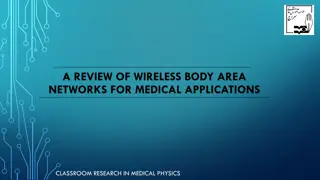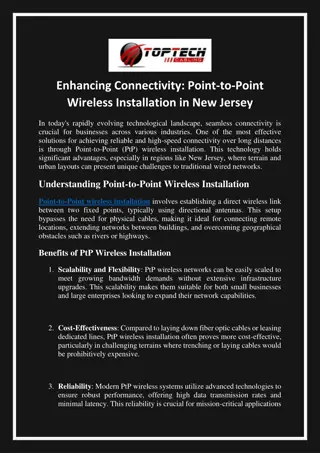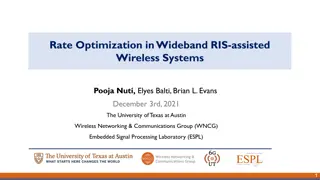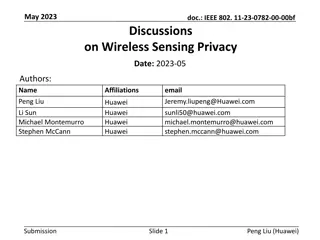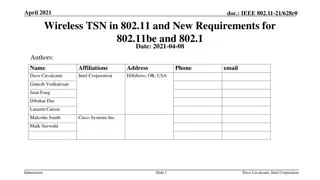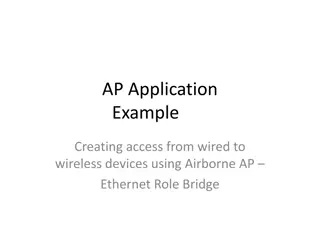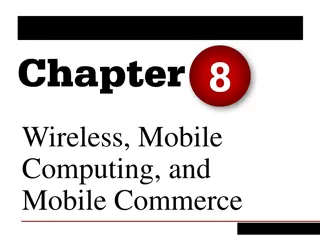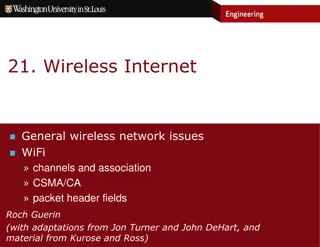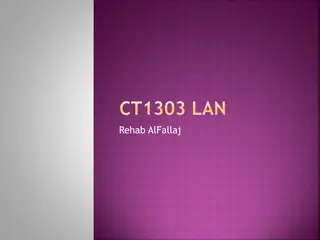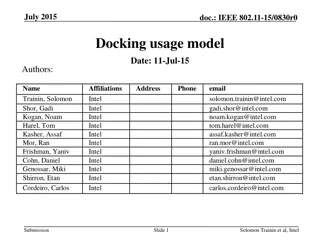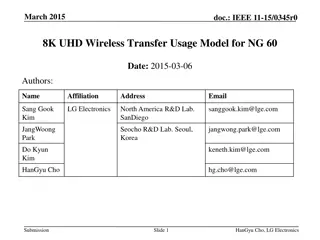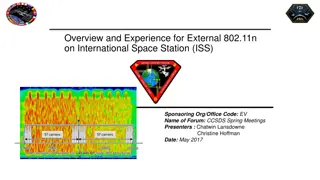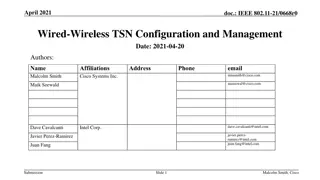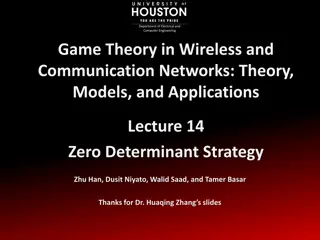
Wireless Network Communication: RTS/CTS Mechanism Explained
Learn about the RTS/CTS mechanism in wireless networks, including virtual carrier sensing, hidden terminal problems, and exposed terminal issues. Discover how RTS/CTS prevents hidden terminals from interfering with data transmission and how exposed terminals decide when it's safe to send data.
Download Presentation

Please find below an Image/Link to download the presentation.
The content on the website is provided AS IS for your information and personal use only. It may not be sold, licensed, or shared on other websites without obtaining consent from the author. Download presentation by click this link. If you encounter any issues during the download, it is possible that the publisher has removed the file from their server.
E N D
Presentation Transcript
Recitation 8 Wireless Networks
Virtual carrier sensing First exchange control frames before transmitting data Sender issues Request to Send (RTS), incl. length of data Receiver responds with Clear to Send (CTS) If sender sees CTS, transmits data (of specified length) If other node sees CTS, will idle for specified period If other node sees RTS but not CTS, free to send 2
Hidden Terminal Problem A B C A and C can t see each other, both send to B RTS/CTS can help Both A and C would send RTS that B would see first B only responds with one CTS (say, echoing A s RTS) C detects that CTS doesn t match and won t send 3
Exposed Terminal Problem A B C D B sending to A, C wants to send to D As C receives packets, carrier sense would prevent it from sending to D, even though wouldn t interfere RTS/CTS can help C hears RTS from B, but not CTS from A C knows its transmission will not interfere at B s receiver C is safe to transmit to D 4
1. When using RTS/CTS, what prevents a hidden terminal from clobbering the packets that another node is sending?
1. When using RTS/CTS, what prevents a hidden terminal from clobbering the packets that another node is sending? Hidden terminal would see the CTS of the sender s desired destination, but not the RTS of the sender, and choose not to send to the same destination as had sent the CTS.
2. When using RTS/CTS, how does an exposed terminal decide it is safe to send?
2. When using RTS/CTS, how does an exposed terminal decide it is safe to send? Exposed terminal would see the RTS of another node, but not the corresponding CTS (from the other node s destination), and know it s safe to send.
3. Why does TCP perform badly on wireless links? What can be done to improve performance without requiring all wired hosts to upgrade to a new protocol?
3. Why does TCP perform badly on wireless links? What can be done to improve performance without requiring all wired hosts to upgrade to a new protocol? TCP treats packet loss as an implicit sign of congestion and decreases the sending rate. In contrast to wired networks, packet loss in wireless networks is not necessarily a sign of congestion; rather, interference and/or fading may be the cause. The performance could be improved by employing WTCP, a TCP proxy at the wireless/wired boundary.
4. Why are many packet losses in wireless networks detected by a timeout rather than a triple-duplicate acknowledgment? What are the performance implications?
4. Why are many packet losses in wireless networks detected by a timeout rather than a triple-duplicate acknowledgment? What are the performance implications? Periodically sustained packet loss due to interference (e.g. a microwave): This decreases the likelihood that any packets are successfully delivered in the same TCP sending window; Instead, all of the packets are lost. Since some successful deliveries are necessary to trigger the receiver to send duplicate ACKs, periodically sustained loss tends to require the sender to rely on retransmission timeout to detect loss. Relatively low capacity leads to a relatively small congestion window: This also decreases the likelihood that enough packets are successfully delivered to enable detection of an earlier packet loss by duplicate acknowledgments. Since there are often smaller transfers due to limited bandwidth or small screen sizes, there is less opportunity for multiple packets in flight during the same RTT.
QUESTION 5: Wireless (10 points) Consider the wireless topology above, comprised of 5 nodes. A (shown in the dotted, shaded circle), B, C, and D all have equi-sized transmission ranges, while E has a smaller range. Assume that if the transmissions of two nodes will interfere at a location if and only if they transmit at the same time and their transmission areas overlap. In these problems, assume that losses only occur due to collisions. (a) When node A transmits to node B, list the potential hidden terminals (in either direction, i.e., those who might clobber A s transmission or those who A s transmission might clobber) and exposed terminals. Hidden terminals: Exposed terminals: (b) What about when node B transmits to node C? Hidden terminals: Exposed terminals: In this wireless topology, A, B, C, and D all have equi-sized transmission ranges, while E has a smaller range. Assume that two nodes transmissions will interfere if and only if they transmit at the same time and their transmission areas overlap. Further, assume that losses only occur due to collisions. When D communicates with C, what nodes are exposed terminals and what nodes are hidden terminals?
QUESTION 5: Wireless (10 points) Consider the wireless topology above, comprised of 5 nodes. A (shown in the dotted, shaded circle), B, C, and D all have equi-sized transmission ranges, while E has a smaller range. Assume that if the transmissions of two nodes will interfere at a location if and only if they transmit at the same time and their transmission areas overlap. In these problems, assume that losses only occur due to collisions. (a) When node A transmits to node B, list the potential hidden terminals (in either direction, i.e., those who might clobber A s transmission or those who A s transmission might clobber) and exposed terminals. Hidden terminals: Exposed terminals: (b) What about when node B transmits to node C? Hidden terminals: Exposed terminals: In this wireless topology, A, B, C, and D all have equi-sized transmission ranges, while E has a smaller range. Assume that two nodes transmissions will interfere if and only if they transmit at the same time and their transmission areas overlap. Further, assume that losses only occur due to collisions. When D communicates with C, what nodes are exposed terminals and what nodes are hidden terminals? only B is a hidden terminal and there are no exposed terminals
QUESTION 5: Wireless (10 points) Consider the wireless topology above, comprised of 5 nodes. A (shown in the dotted, shaded circle), B, C, and D all have equi-sized transmission ranges, while E has a smaller range. Assume that if the transmissions of two nodes will interfere at a location if and only if they transmit at the same time and their transmission areas overlap. In these problems, assume that losses only occur due to collisions. (a) When node A transmits to node B, list the potential hidden terminals (in either direction, i.e., those who might clobber A s transmission or those who A s transmission might clobber) and exposed terminals. Hidden terminals: Exposed terminals: (b) What about when node B transmits to node C? Hidden terminals: Exposed terminals: If A sends data to B and C sends data to D (as fast as they can), and no collision detection mechanism is used, what is the throughput of their transfer as a proportion of their send rate? A -> B ? C -> D ?
QUESTION 5: Wireless (10 points) Consider the wireless topology above, comprised of 5 nodes. A (shown in the dotted, shaded circle), B, C, and D all have equi-sized transmission ranges, while E has a smaller range. Assume that if the transmissions of two nodes will interfere at a location if and only if they transmit at the same time and their transmission areas overlap. In these problems, assume that losses only occur due to collisions. (a) When node A transmits to node B, list the potential hidden terminals (in either direction, i.e., those who might clobber A s transmission or those who A s transmission might clobber) and exposed terminals. Hidden terminals: Exposed terminals: (b) What about when node B transmits to node C? Hidden terminals: Exposed terminals: If A sends data to B and C sends data to D (as fast as they can), and no collision detection mechanism is used, what is the throughput of their transfer as a proportion of their send rate? A -> B ? 0% C -> D ? 100%
QUESTION 5: Wireless (10 points) Consider the wireless topology above, comprised of 5 nodes. A (shown in the dotted, shaded circle), B, C, and D all have equi-sized transmission ranges, while E has a smaller range. Assume that if the transmissions of two nodes will interfere at a location if and only if they transmit at the same time and their transmission areas overlap. In these problems, assume that losses only occur due to collisions. (a) When node A transmits to node B, list the potential hidden terminals (in either direction, i.e., those who might clobber A s transmission or those who A s transmission might clobber) and exposed terminals. Hidden terminals: Exposed terminals: (b) What about when node B transmits to node C? Hidden terminals: Exposed terminals: If A sends data to B and C sends data to D (as fast as they can), and CSMA is used, what is the throughput of their transfer as a proportion of their send rate? A -> B ? C -> D ?
QUESTION 5: Wireless (10 points) Consider the wireless topology above, comprised of 5 nodes. A (shown in the dotted, shaded circle), B, C, and D all have equi-sized transmission ranges, while E has a smaller range. Assume that if the transmissions of two nodes will interfere at a location if and only if they transmit at the same time and their transmission areas overlap. In these problems, assume that losses only occur due to collisions. (a) When node A transmits to node B, list the potential hidden terminals (in either direction, i.e., those who might clobber A s transmission or those who A s transmission might clobber) and exposed terminals. Hidden terminals: Exposed terminals: (b) What about when node B transmits to node C? Hidden terminals: Exposed terminals: If A sends data to B and C sends data to D (as fast as they can), and CSMA is used, what is the throughput of their transfer as a proportion of their send rate? A -> B ? 0% C -> D ? 100%
QUESTION 5: Wireless (10 points) Consider the wireless topology above, comprised of 5 nodes. A (shown in the dotted, shaded circle), B, C, and D all have equi-sized transmission ranges, while E has a smaller range. Assume that if the transmissions of two nodes will interfere at a location if and only if they transmit at the same time and their transmission areas overlap. In these problems, assume that losses only occur due to collisions. (a) When node A transmits to node B, list the potential hidden terminals (in either direction, i.e., those who might clobber A s transmission or those who A s transmission might clobber) and exposed terminals. Hidden terminals: Exposed terminals: (b) What about when node B transmits to node C? Hidden terminals: Exposed terminals: Now assume a RTS / CTS protocol is used. Assume that the overhead from RTS and CTS packets is small relative to the data transfer. What are the approximate throughputs of the transfer from each node? A -> B ? C -> D ?
QUESTION 5: Wireless (10 points) Consider the wireless topology above, comprised of 5 nodes. A (shown in the dotted, shaded circle), B, C, and D all have equi-sized transmission ranges, while E has a smaller range. Assume that if the transmissions of two nodes will interfere at a location if and only if they transmit at the same time and their transmission areas overlap. In these problems, assume that losses only occur due to collisions. (a) When node A transmits to node B, list the potential hidden terminals (in either direction, i.e., those who might clobber A s transmission or those who A s transmission might clobber) and exposed terminals. Hidden terminals: Exposed terminals: (b) What about when node B transmits to node C? Hidden terminals: Exposed terminals: Now assume a RTS / CTS protocol is used. Assume that the overhead from RTS and CTS packets is small relative to the data transfer. What are the approximate throughputs of the transfer from each node? A -> B ? 50% C -> D ? 50%
D A B C Hidden Terminals for E -> B? E E A D C B
D A B C Hidden Terminals for E -> B? D E C would receive CTS and not send. However, C is not a hidden terminal, because its range will not reach B. E A D C B
D A B C Hidden Terminals for E -> B? D E Exposed Terminals for B -> D? E A D C B
D A B C Hidden Terminals for E -> B? D E Exposed Terminals for B -> D? A, E, & C E A D C B
Participation Check Not graded, just like Assignment 0. Please write name, NetID, and answers on paper and return to us. This is open notes, references, slides, and even brainstorming with each other. Please answer each question briefly. (Two to five sentences for each question should suffice.) 1. Why does SplitStream construct a multicast forest? What property of the multicast forest construction (without the spare capacity group) strives to ensure fairness? 2. What is serialization in Java? Why is serialization necessary for Java RMI (RPC)?

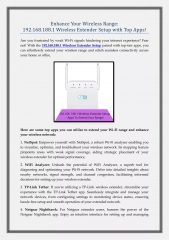

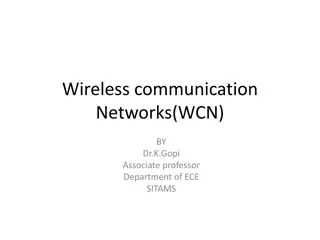
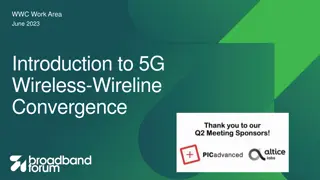
![Long-Range Wireless Charging Market Report & Analysis _ BIS Research [2024-2035]](/thumb/87166/long-range-wireless-charging-market-report-analysis-bis-research-2024-2035.jpg)
